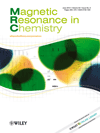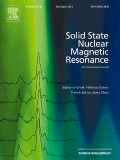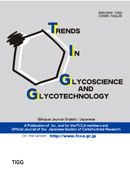
Biomolecular NMR Assignments
metrics 2024
Unraveling molecular mysteries with cutting-edge spectroscopy.
Introduction
Biomolecular NMR Assignments is a prominent academic journal dedicated to advancing the field of biomolecular nuclear magnetic resonance (NMR) spectroscopy. Published by SPRINGER, this journal aims to provide a platform for researchers to share significant findings, methodological advancements, and in-depth analyses related to protein structure, dynamics, and interactions through NMR techniques. Although not currently open access, it serves as a valuable resource for those in the fields of Biochemistry and Structural Biology, having established a respectable impact factor reflected in its category rankings within these disciplines. With its coverage spanning from 2007 to 2024, Biomolecular NMR Assignments continues to facilitate the exchange of knowledge among professionals and students, contributing to the growth and enhancement of contemporary scientific inquiry. Explore the intricacies of biomolecular studies in the Netherlands and beyond, where critical insights into molecular behavior and function converge.
Metrics 2024
 0.40
0.40 0.80
0.80 0.60
0.60 19
19Metrics History
Rank 2024
Scopus
IF (Web Of Science)
JCI (Web Of Science)
Quartile History
Similar Journals

JOURNAL OF MOLECULAR BIOLOGY
Charting the Course of Molecular Research ExcellenceThe Journal of Molecular Biology (ISSN: 0022-2836, E-ISSN: 1089-8638), published by Academic Press Ltd - Elsevier Science Ltd, stands as a premier platform for disseminating significant advancements in the field of molecular biology. With a distinguished history of publication spanning from 1959 to 2024, this journal is recognized for its high-quality, peer-reviewed articles that engage with transformative research in biophysics, structural biology, and molecular biology. The journal holds an impressive Q1 category ranking across these disciplines in 2023, affirming its impact and relevance within the scientific community. Notably, it ranks #11 in biophysics and #5 in structural biology based on Scopus metrics, placing it in the 93rd and 90th percentiles, respectively. As an essential resource for researchers, professionals, and students alike, the Journal of Molecular Biology serves as a vital conduit for the exchange of innovative ideas and discoveries, fostering a deeper understanding of life's molecular underpinnings.

Journal of the Korean Magnetic Resonance Society
Exploring the Frontiers of Magnetic Resonance TechnologyJournal of the Korean Magnetic Resonance Society, published by the Korean Magnetic Resonance Society, serves as a premier platform for advancing the field of magnetic resonance research. This journal, with the ISSN 1226-6531, is dedicated to disseminating innovative studies and critical reviews in areas encompassing magnetic resonance imaging, spectroscopy, and related technologies. Based in Seoul, South Korea, it aims to foster collaboration and knowledge exchange among researchers, professionals, and students globally. Although it follows a traditional subscription model, the journal is committed to high-quality, peer-reviewed content, ensuring that published articles undergo rigorous evaluation. By bridging the gap between academia and industry, the Journal of the Korean Magnetic Resonance Society plays a vital role in pushing the boundaries of magnetic resonance science, making it essential reading for anyone engaged in this cutting-edge field.

Current Research in Structural Biology
Advancing the Frontiers of Structural BiologyCurrent Research in Structural Biology, published by Elsevier, is a pioneering Open Access journal that has rapidly gained prominence since its inception in 2019. With a focus on advancing the understanding of molecular and structural biology, this journal provides a platform for researchers and professionals to publish groundbreaking findings that contribute to the field's ongoing development. With a commendable Q2 ranking in both Molecular Biology and Structural Biology categories for 2023, it serves as a vital resource for the community, ensuring accessibility to high-quality research. The journal is indexed in Scopus, showcasing its significant impact and relevance, particularly with a ranking of #26/49 in the Structural Biology discipline. Located in the heart of the Netherlands, Current Research in Structural Biology not only fosters academic discourse but also encourages collaborative research efforts in addressing critical biological questions. Whether you are a researcher, student, or industry professional, this journal is essential for staying abreast of the latest advancements and trends in structural biology.

JOURNAL OF STRUCTURAL CHEMISTRY
Fostering Insight and Excellence in Structural ChemistryThe JOURNAL OF STRUCTURAL CHEMISTRY, published by PLEIADES PUBLISHING INC, is a premier resource in the fields of Inorganic Chemistry, Materials Chemistry, and Physical and Theoretical Chemistry. Established in 1960, this journal has been providing a platform for groundbreaking research, facilitating the advancement of knowledge and innovation up to the year 2024. With an ISSN of 0022-4766 and an E-ISSN of 1573-8779, this journal strives to maintain high academic standards, as evidenced by its quartile rankings in 2023, where it ranks Q4 across various chemistry categories. While it currently does not offer open access, the journal's insightful articles are crucial for professionals and students seeking to enhance their understanding and expertise in structural chemistry. Subscribers can expect a comprehensive collection of peer-reviewed research, empirical findings, and theoretical discussions that contribute significantly to the scientific community. With its strong historical foundation and ongoing commitment to quality, the JOURNAL OF STRUCTURAL CHEMISTRY continues to be an essential resource for those passionate about the complexities of structural chemistry.

MAGNETIC RESONANCE IN CHEMISTRY
Advancing the Frontiers of Magnetic Resonance in ChemistryMAGNETIC RESONANCE IN CHEMISTRY, published by Wiley, is a prominent journal dedicated to the advancement of knowledge in the field of magnetic resonance as applied to chemistry and materials science. With an ISSN of 0749-1581 and an E-ISSN of 1097-458X, this journal has been an essential resource for researchers since its inception in 1985, maintaining its reputation as a leading publication through its converged years up to 2024. Spanning diverse topics, the journal holds a Q2 quartile ranking in both the Chemistry (miscellaneous) and Materials Science (miscellaneous) categories, illustrating its significance in the academic community. With Scopus rankings placing it in the 61st percentile for General Chemistry and the 55th percentile for General Materials Science, this journal is an esteemed platform for original research, reviews, and critical discussions surrounding magnetic resonance methodologies and applications. As access options are not open, it ensures a curated dissemination of high-quality, peer-reviewed content to support professionals, researchers, and students in their scholarly endeavors.

JOURNAL OF BIOMOLECULAR NMR
Elevating the standards of molecular spectroscopy.JOURNAL OF BIOMOLECULAR NMR, published by SPRINGER, is a leading academic journal dedicated to advancing the field of molecular spectroscopy, particularly in the realm of biomolecular studies. With an ISSN of 0925-2738 and an E-ISSN of 1573-5001, the journal has been consistently publishing high-quality research since its inception in 1991, and continues to do so through 2024. The journal maintains an impressive reputation within its category, achieving a Q2 ranking in Biochemistry and a Q1 ranking in Spectroscopy as of 2023, reflecting its commitment to excellence and innovation in scientific research. Notably, it ranks 26th in Scopus for Chemistry - Spectroscopy and 198th for Biochemistry, indicating its significance in the scholarly community. Although it operates under a traditional access model, the journal serves as an essential resource for researchers, professionals, and students interested in the molecular nuances of biomolecules, offering insights that drive advances in biochemistry and related disciplines.

SOLID STATE NUCLEAR MAGNETIC RESONANCE
Transforming Understanding through High-Impact NMR ResearchSOLID STATE NUCLEAR MAGNETIC RESONANCE, published by Academics Press Inc Elsevier Science, stands as a prominent journal in the fields of chemistry, instrumentation, nuclear and high energy physics, and radiation, offering a unique platform for researchers and professionals to disseminate their findings and insights. Since its inception in 1992, the journal has continuously showcased innovative research that enhances our understanding of solid-state NMR techniques and applications, contributing significantly to advancements in both theoretical and practical domains. With an impressive impact factor and achieving Q2 rankings across multiple disciplines, it represents a vital resource for academics and industry experts alike, fostering interdisciplinary collaboration and knowledge sharing. While currently not open access, researchers can access valuable content through institutional subscriptions, ensuring a wide reach and influence in the scientific community. The journal's commitment to high-quality publishing makes it a must-read for those at the forefront of nuclear magnetic resonance research.

Biomolecules
Illuminating the path of discovery in molecular biology.Biomolecules is a prestigious, peer-reviewed journal published by MDPI that has been dedicated to advancing the field of biochemical research since its launch in 2011. With an impressive impact factor positioning it in Q1 for Biochemistry and Q2 for Molecular Biology as of 2023, this journal serves as a vital platform for disseminating high-quality research findings related to biological macromolecules, including proteins, nucleic acids, and carbohydrates. Operating as an Open Access journal, it ensures that vital research is accessible to all, furthering knowledge dissemination and collaboration within the scientific community. Located in Basel, Switzerland, the journal has established a significant presence in major academic databases, holding commendable Scopus rankings in both Biochemistry and Molecular Biology. Researchers, professionals, and students will find Biomolecules an invaluable resource for cutting-edge research, reviews, and insights in the rapidly evolving domains of biochemistry and molecular biology.

TRENDS IN GLYCOSCIENCE AND GLYCOTECHNOLOGY
Illuminating the Path of Glycan ApplicationsTRENDS IN GLYCOSCIENCE AND GLYCOTECHNOLOGY, a reputable journal published by GAKUSHIN PUBL CO, serves as an essential resource for researchers and professionals engaged in the evolving fields of glycoscience and glyotechnology. Established in 1989, this journal has progressively focused on stimulating discussions and disseminating pivotal findings that impact various applications in biochemistry and organic chemistry. With an impressive converge covering decades up to 2024, the journal has carved a niche within the scientific community, despite currently being classified in the lower quartiles (Q4) for its respective categories in 2023. This designation underscores the potential for growth and enhanced visibility within research networks. While it currently operates under a subscription-based model, TRENDS IN GLYCOSCIENCE AND GLYCOTECHNOLOGY remains committed to fostering innovation and interdisciplinary collaboration, providing a critical platform for the exploration of glycan structures and functions. Located in Tokyo, Japan, the journal invites contributions that contribute to the future direction of glycoscientific research and its applications.

FEBS Open Bio
Exploring the depths of biochemistry, genetics, and beyond.FEBS Open Bio is a leading open-access journal published by Wiley, dedicated to advancing our understanding of biochemistry, genetics, and molecular biology. Since its inception in 2011, this journal has provided a robust platform for researchers to share their findings with a wider audience, ensuring the dissemination of high-quality scientific knowledge. With an impact factor reflecting its stature in its field, FEBS Open Bio is ranked #77 out of 221 in general biochemistry, genetics, and molecular biology, placing it in the 65th percentile among its peers. This journal serves as an essential resource for professionals, researchers, and students alike, fostering collaboration and innovation within the scientific community. The commitment to open access not only enhances visibility but also promotes transparency in research, making it a vital contributor to the ongoing dialogue in biochemical and molecular biological sciences. For those looking to stay at the forefront of research developments, FEBS Open Bio is a key publication addressing the latest trends and discoveries in the field.